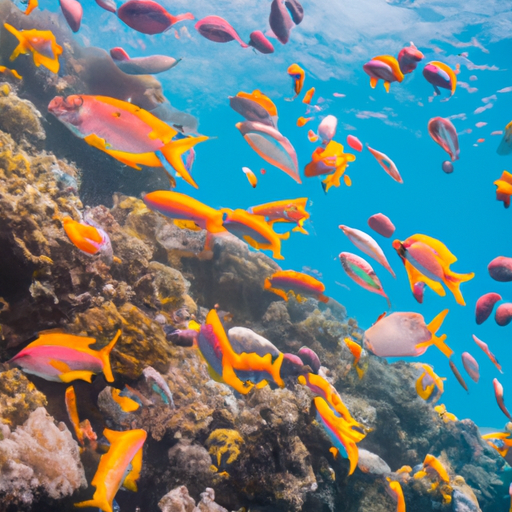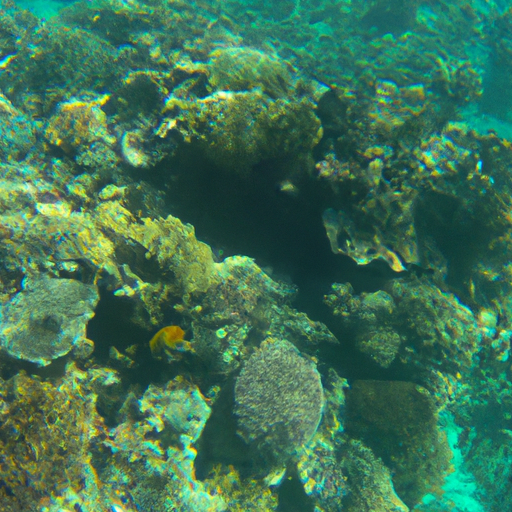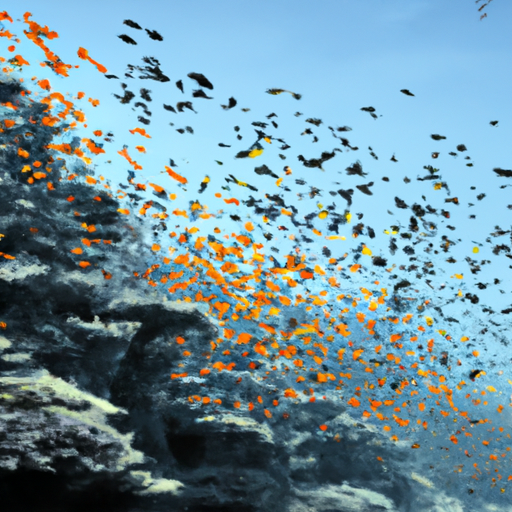
The Significance of Preserving Biodiversity in Marine Ecosystems
The world’s oceans are home to a staggering array of marine life, each species playing a unique role in the delicate balance of our planet’s ecosystems. From the smallest microorganisms to the largest marine mammals, preserving biodiversity in our oceans is of paramount importance.
Biodiversity, or the variety of life forms within a given ecosystem, is crucial for the health and stability of marine environments. It ensures that the ecosystem can adapt to changes and maintain its functions, such as nutrient cycling, water purification, and carbon sequestration. Without biodiversity, these vital processes would be disrupted, leading to negative consequences for both marine life and humans.
Protecting marine life is a key aspect of preserving biodiversity in our oceans. Each species has a unique role in maintaining the balance and productivity of the ecosystem. For example, certain fish species play a vital role in controlling populations of prey species, preventing them from overwhelming their habitat and leading to cascading effects throughout the food chain.
Moreover, marine organisms produce a wide range of compounds that have immense value to human society. These include potential new medicines, industrial products, and sources of food. Preserving biodiversity ensures that we have access to these valuable resources both now and in the future.
However, human activities have put immense pressure on marine ecosystems, leading to a rapid decline in biodiversity. Overfishing, habitat destruction, pollution, and climate change have all contributed to the loss of marine species and ecosystems. The consequences of this loss are far-reaching, negatively impacting not only the marine life but also the livelihoods of millions of people who depend on the oceans for food and income.
Efforts to protect marine life and preserve biodiversity in our oceans are essential. This includes establishing marine protected areas, implementing sustainable fishing practices, reducing pollution, and mitigating climate change. Additionally, public awareness and education play a critical role in fostering a sense of responsibility for the oceans and inspiring individuals to take action.
The importance of preserving biodiversity in marine ecosystems cannot be overstated. Our oceans are teeming with life, each species playing a unique role in maintaining the health and balance of the ecosystem. Through concerted efforts to protect marine life and preserve biodiversity, we can ensure the long-term health and sustainability of our oceans for generations to come.
Threats to Marine Life: Understanding the Impact of Human Activities
Protecting marine life is crucial for the preservation of biodiversity in our oceans. Biodiversity refers to the variety of life forms found in a particular ecosystem, and the oceans are home to an incredible array of species. Unfortunately, human activities have posed significant threats to marine biodiversity, leading to a decline in the health of our oceans.
One of the primary threats to marine life is overfishing. Many commercial fishing practices, such as bottom trawling and longlining, are unsustainable and result in the depletion of fish populations. This not only disrupts the delicate balance of marine ecosystems but also impacts the livelihoods of coastal communities that rely on fishing for their sustenance.
Pollution is another major threat to marine biodiversity. Chemical pollutants, such as oil spills and industrial waste, contaminate marine environments and can have severe impacts on marine life. These pollutants can disrupt reproductive cycles, impair immune systems, and even cause death in marine organisms. Plastic pollution has also become a significant concern, with millions of tons of plastic waste ending up in the oceans each year, posing a threat to countless marine species.
Habitat destruction, particularly through the destruction of coral reefs and coastal mangroves, is another significant threat to marine life. Coral reefs are incredibly diverse ecosystems that provide habitat to a wide range of marine species. However, activities such as dynamite fishing and the use of destructive fishing practices can lead to the degradation and destruction of coral reefs. Coastal mangroves, on the other hand, serve as crucial nurseries for many marine species, and their destruction can disrupt the life cycles of numerous organisms.
Climate change is also emerging as a significant threat to marine biodiversity. Rising ocean temperatures and increasing levels of carbon dioxide in the atmosphere are leading to ocean acidification and coral bleaching. These phenomena have severe impacts on marine ecosystems and can lead to the loss of key species. The disruption of oceanic ecosystems can have far-reaching consequences for the entire planet, as healthy oceans play a crucial role in regulating the Earth’s climate.
In order to protect marine life and preserve biodiversity in our oceans, concerted efforts are needed at both individual and collective levels. Sustainable fishing practices, such as the establishment of marine protected areas and the implementation of fishing quotas, can help restore fish populations and safeguard marine ecosystems. Stricter regulations on pollution and waste management can also help mitigate the impacts of pollution on marine life. Additionally, the preservation and restoration of critical habitats like coral reefs and mangroves are crucial for the long-term survival of marine species.
Preserving marine biodiversity is not just a matter of environmental concern but also of economic and social importance. The oceans provide essential resources, such as food and livelihoods, to millions of people worldwide. Moreover, marine ecosystems contribute to climate regulation and carbon sequestration, playing a vital role in the overall health of our planet. By protecting marine life, we can ensure the continued existence of these invaluable ecosystems and secure a sustainable future for both humans and marine species.
Conservation Efforts: Promoting Sustainable Practices for Marine Biodiversity
The world’s oceans are incredibly diverse ecosystems that support a wide range of marine life. From colorful coral reefs to majestic whales, our oceans are home to an abundance of biodiversity. However, this delicate balance of life is facing numerous threats, and it is crucial that we take action to protect and preserve marine biodiversity.
Preserving marine biodiversity is of utmost importance because it plays a vital role in maintaining the health and stability of our planet. Marine ecosystems, such as coral reefs and seagrass meadows, act as nurseries for many species, providing essential habitats for their reproduction and growth. These ecosystems also serve as feeding grounds for numerous marine organisms, forming intricate food chains that support entire communities of animals.
Furthermore, marine biodiversity contributes significantly to the overall health of our oceans. Different species play crucial roles in nutrient recycling, water filtration, and carbon sequestration. For example, photosynthetic organisms like phytoplankton and algae produce oxygen and remove carbon dioxide from the atmosphere, helping regulate the Earth’s climate.
Unfortunately, human activities are placing immense stress on marine biodiversity. Overfishing, pollution, habitat destruction, and climate change are just a few of the threats that marine life faces today. Species are being depleted at alarming rates, and entire ecosystems are at risk of collapse.
To address these challenges and protect marine life, conservation efforts must focus on promoting sustainable practices. This includes establishing marine protected areas, implementing fishing regulations, reducing pollution, and addressing climate change. By creating marine reserves and protected areas, we can safeguard critical habitats and allow marine life to flourish. Implementing fishing regulations, such as catch limits and seasonal closures, helps maintain fish populations and prevent overfishing.
Reducing pollution, particularly plastic pollution, is crucial for the health of marine ecosystems. Plastic waste poses a significant threat to marine life, with millions of marine animals dying each year from ingesting or becoming entangled in plastic debris. By implementing measures to reduce and properly manage plastic waste, we can minimize its impact on marine biodiversity.
Addressing climate change is also essential for the long-term preservation of marine life. Rising sea temperatures, ocean acidification, and sea level rise all pose significant threats to marine ecosystems. By transitioning to clean and renewable energy sources, reducing carbon emissions, and supporting initiatives to protect and restore coastal habitats, we can mitigate the impacts of climate change on marine biodiversity.
In conclusion, protecting and preserving marine biodiversity is of utmost importance for the health and well-being of our planet. By promoting sustainable practices, establishing protective measures, and addressing the threats facing marine life, we can ensure the long-term survival of diverse and vibrant ocean ecosystems.
The Future of Our Oceans: Why Protecting Marine Life is Crucial for a Healthy Planet
Protecting marine life and preserving biodiversity in our oceans is of paramount importance for the future of our planet. The world’s oceans are teeming with an incredible array of plant and animal species, each playing a unique role in maintaining the delicate balance of marine ecosystems.
Biodiversity refers to the variety and variability of life on Earth, and our oceans are home to an estimated 80% of all living species. From microscopic plankton to majestic whales, every organism has a part to play in the intricate web of life beneath the waves. Preserving this biodiversity is crucial, as it ensures the resilience and stability of marine ecosystems.
One of the primary reasons for protecting marine biodiversity is the ecological services that it provides. Marine organisms produce oxygen, absorb carbon dioxide, and regulate global climate patterns. Coral reefs, for example, support an astounding amount of biodiversity and act as natural barriers against storm surges, protecting coastal communities from the devastating impact of hurricanes and tsunamis.
Furthermore, marine biodiversity is essential for sustaining fisheries and securing food security for millions of people around the world. Fish and other seafood are a major source of protein for many communities, particularly in developing countries. However, overfishing and destructive fishing practices have severely depleted fish populations, threatening the livelihoods of those who depend on them.
Preserving marine biodiversity also has significant economic benefits. Coastal tourism, for instance, generates billions of dollars annually and relies on healthy and diverse marine ecosystems. Pristine beaches, vibrant coral reefs, and the opportunity to encounter marine wildlife attract millions of visitors each year. However, without adequate protection, these ecosystems can degrade, leading to a decline in tourist activity and a loss of revenue.
Lastly, protecting marine life is crucial for scientific research and potential medical discoveries. Ocean organisms have provided us with numerous compounds that have revolutionized medicine, including treatments for cancer, bacterial infections, and pain management. By safeguarding marine biodiversity, we can continue to unlock the potential of these unique organisms and uncover new avenues for innovation and medical breakthroughs.
In conclusion, preserving marine biodiversity is not only essential for the health and sustainability of our oceans but also for the well-being of our planet as a whole. By recognizing the importance of protecting marine life and taking action to conserve and restore these ecosystems, we can ensure a future where our oceans thrive and continue to provide for generations to come.



